If the vast majority of county pigeon fancier associations choose the option to compete their young birds according to a slightly easier competition plan, there are, however, counties in which the young birds are not so well cared for in the year of birth. A large part of the county associations of the National Federation of Pigeon Fanciers (FNCPR) in Romania also organize three long distance races for young birds, thus giving their members the opportunity to achieve this norm.. This is also the case of the associations Caraș Severin and Botoșani, which in the 2020 season give the three occupants of the national podium in the Long distance young birds category.
The norm of the Long distance young birds category is achieved by ranking three races of over 475 km, which together should total a minimum of 1,650 km. At the end of the young birds season in 2020, 408 pigeons met the norm of this category, a figure that shows that this category involves a fairly difficult. Among the pigeons that managed to rank the three basic races necessary for the norm, the lowest penalty points were achueved by Daniel Pîslă’s hen, with the series RO-20-2015775, a pigeon that also won the 1st National Allround and 2nd place of Middle distance category. She is also followed by a hen, with the series RO-20-0463445, competed by Ioan-Vasile Boz, from Botoșani, and by another hen, competed by Bogdan Balea, from Caraş Severin, whose series is RO-20-0139536 .
Daniel Pîslă (CS), national champion in the Long distance Young birds category
For twelve years, the pigeon fancier Daniel Pîslă, from Reșița, Caraș Severin County, has won at least one national trophy every year. In 2020 he had a wonderful young birds season, winning with one pigeon three national trophies. Theywere brought by the hen with the series RO-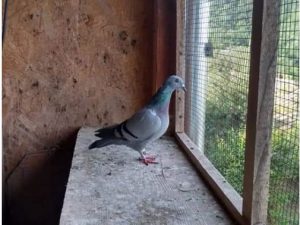 20-2015775, a pigeon that won this season the 1st place National Long distance, the 1st place National Allround and 2nd National Middle distance. In the Long distance young birds category, Daniel Pîslă’s hen obtained 11.05 penalty points, achieved according to the following rankings: 5th place / 2,660 pigeons (538 km), 4th place / 1,297 pigeons (598 km) and 11th place / 1,726 pigeons (627 km). “She is related to the 2017 pigeon, which won five national trophies and to the hen who last year was the national champion at the National Ace Palmares. Her parents are brought through my friend Constantin Fulger, the pigeons with mostly Koopman origins, from Marc Brett. It is reproduced in the first series, having a sister who also competed very well. The young birds were competed using the natural method, without darkness or anything else, because for me continuity is important and I believe that such procedures affect the future. All the young birds participated for the long distance race, those who managed to rank it also went to the second and, of course, those who also ranked the second race, went to the third. So was the case with this hen. To feed the young birds in season, I use light, pea-free food from different producers. The producer is not important. It is important to have a good mixture and not to have peas. Even in the long distance races, the young birds did not receive a mixture containing peas. I have to say that I don’t have a specific training program either. It depends on the pigeons. If it was a difficult stage, I don’t do any training between races. This year, almost all the stages with the young birds were difficult, and the three long distance races were windy. It was very difficult, especially, the third race, where the pigeons were launched at 10:35, due to the fog, and only one pigeon from the competition arrived home on the first day “, explained Daniel Pîslă.
20-2015775, a pigeon that won this season the 1st place National Long distance, the 1st place National Allround and 2nd National Middle distance. In the Long distance young birds category, Daniel Pîslă’s hen obtained 11.05 penalty points, achieved according to the following rankings: 5th place / 2,660 pigeons (538 km), 4th place / 1,297 pigeons (598 km) and 11th place / 1,726 pigeons (627 km). “She is related to the 2017 pigeon, which won five national trophies and to the hen who last year was the national champion at the National Ace Palmares. Her parents are brought through my friend Constantin Fulger, the pigeons with mostly Koopman origins, from Marc Brett. It is reproduced in the first series, having a sister who also competed very well. The young birds were competed using the natural method, without darkness or anything else, because for me continuity is important and I believe that such procedures affect the future. All the young birds participated for the long distance race, those who managed to rank it also went to the second and, of course, those who also ranked the second race, went to the third. So was the case with this hen. To feed the young birds in season, I use light, pea-free food from different producers. The producer is not important. It is important to have a good mixture and not to have peas. Even in the long distance races, the young birds did not receive a mixture containing peas. I have to say that I don’t have a specific training program either. It depends on the pigeons. If it was a difficult stage, I don’t do any training between races. This year, almost all the stages with the young birds were difficult, and the three long distance races were windy. It was very difficult, especially, the third race, where the pigeons were launched at 10:35, due to the fog, and only one pigeon from the competition arrived home on the first day “, explained Daniel Pîslă.
2nd National place, won by Ioan-Vasile Boz from Botosani
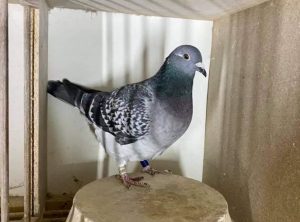 In 2020, the pigeon fancier Ioan-Vasile Boz, a member of the Botoșani Pigeon Association, competed with his entire group of young birds at all three long distance stages organized by his county association. One of her young flyers, the hen with the series RO-20-0463445, managed not only to rank the three long distance competitions, but also to win the trophy of national vice-champion in the Long distance young birds category. Its coefficient is 16.23 penalty points, achieved after ranking 3rd out of 494 pigeons (659 km), 7th out of 1,369 pigeons (586 km) and 13th out of 2,572 pigeons (585 km). “It is a young bird reproduced in the first series, near the end of February. I competed the whole group of 50 young pigeons at the three main stages organized by the Botoșani Pigeon Association, at the end of which I was left with 28 pigeons. They were kept in the dark from late March to mid-June, with only 8-9 hours of light per day. For feeding I used a mixture made by myself, composed of 50% local corn, and the rest of the seeds were generally small seeds and an addition of carrot granules. On the last day before basketing, I also gave them a lot of nuts. The vice-champion is reproduced in a inbreeded pair, her parents being half-siblings on the mother side. The father of the vice-champion is a cock of Ettiene Meirlaen and Desmeyster-Restiaen, and the mother is also a hen of Ettiene Meirlaen, both reproduced from the hen Young Super National Marseille “, mentioned Ioan-Vasile Boz.
In 2020, the pigeon fancier Ioan-Vasile Boz, a member of the Botoșani Pigeon Association, competed with his entire group of young birds at all three long distance stages organized by his county association. One of her young flyers, the hen with the series RO-20-0463445, managed not only to rank the three long distance competitions, but also to win the trophy of national vice-champion in the Long distance young birds category. Its coefficient is 16.23 penalty points, achieved after ranking 3rd out of 494 pigeons (659 km), 7th out of 1,369 pigeons (586 km) and 13th out of 2,572 pigeons (585 km). “It is a young bird reproduced in the first series, near the end of February. I competed the whole group of 50 young pigeons at the three main stages organized by the Botoșani Pigeon Association, at the end of which I was left with 28 pigeons. They were kept in the dark from late March to mid-June, with only 8-9 hours of light per day. For feeding I used a mixture made by myself, composed of 50% local corn, and the rest of the seeds were generally small seeds and an addition of carrot granules. On the last day before basketing, I also gave them a lot of nuts. The vice-champion is reproduced in a inbreeded pair, her parents being half-siblings on the mother side. The father of the vice-champion is a cock of Ettiene Meirlaen and Desmeyster-Restiaen, and the mother is also a hen of Ettiene Meirlaen, both reproduced from the hen Young Super National Marseille “, mentioned Ioan-Vasile Boz.
Also from Caras, Bogdan Balea wins the 3rd place National Long distnce young birds 2020
Of the 408 young birds that met, in 2020, the norm of the Long distance young birds category, 128 belong to fanciers from Caraş Severin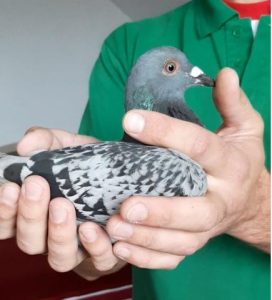 County, a pigeon fancier association that also gives the occupants of the 1st and 3rd National places. If on the 1st National place, as we showed, is Daniel Pîslă, on the 3rd National place is Bogdan Balea, from Oravița. Ranking on the 9th place out of 1,028 pigeons (550 km), on the 11th place out of 1,297 pigeons (610 km) and on the 9th place out of 1,726 pigeons (638 km), the young hen of Bogdan Balea, with the series RO-20-0139536 , obtained a coefficient of 21.49 penalty points. “The chick’s mother is a Kuijpers hen, and the father is a local cock, I could say, reproduced from a cock from Petrică Coșaru and a Wanroy hen. It hatched in March and I can say that I competed using th natural method, meaning no darkening method at all, and without being paire. This is the first year in which the young birds compete in the long distance races. For feeding, I used Mifuma food, brought directly from Germany. I did the training and recovery with Rohnfried and Tollisan products, and I did a lot of training between races. Sometimes it happened even twice a day, from 50 and 70 km “, explained Bogdan Balea.
County, a pigeon fancier association that also gives the occupants of the 1st and 3rd National places. If on the 1st National place, as we showed, is Daniel Pîslă, on the 3rd National place is Bogdan Balea, from Oravița. Ranking on the 9th place out of 1,028 pigeons (550 km), on the 11th place out of 1,297 pigeons (610 km) and on the 9th place out of 1,726 pigeons (638 km), the young hen of Bogdan Balea, with the series RO-20-0139536 , obtained a coefficient of 21.49 penalty points. “The chick’s mother is a Kuijpers hen, and the father is a local cock, I could say, reproduced from a cock from Petrică Coșaru and a Wanroy hen. It hatched in March and I can say that I competed using th natural method, meaning no darkening method at all, and without being paire. This is the first year in which the young birds compete in the long distance races. For feeding, I used Mifuma food, brought directly from Germany. I did the training and recovery with Rohnfried and Tollisan products, and I did a lot of training between races. Sometimes it happened even twice a day, from 50 and 70 km “, explained Bogdan Balea.
In conclusion, we can mention that two of the three pigeons on the national podium of the Long distance young birds category competed “naturally”, understanding by this method that they did not intervene by various means to stop or accelerate the moulting or to stimulate motivation. Instead, the 2nd National place was won with a young bird kept in the dark, which means that both methods can bring performance. However, it is worth noting the capacity shown by the racing pigeons, competing at the age of only a few months at distances of over 600 km.
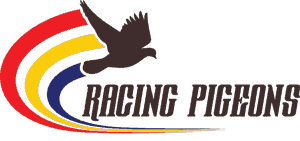
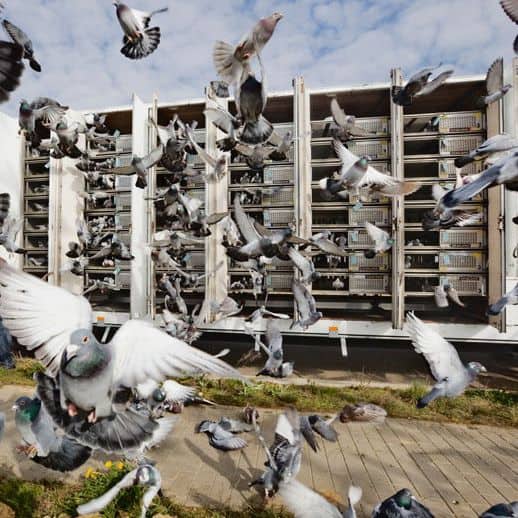
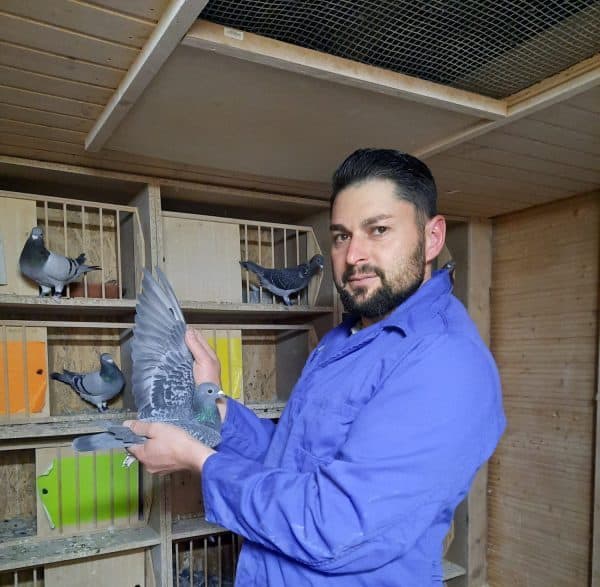
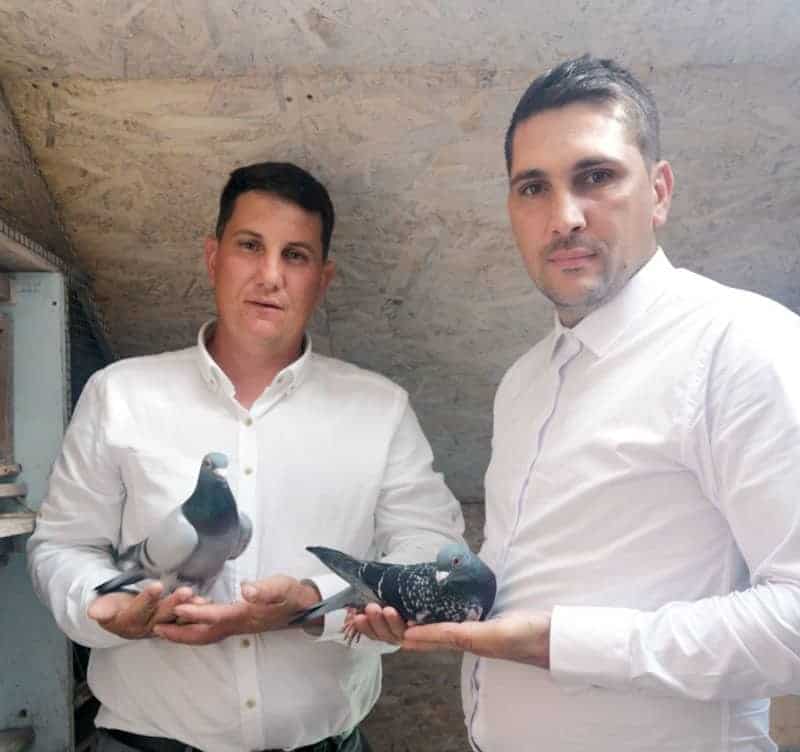
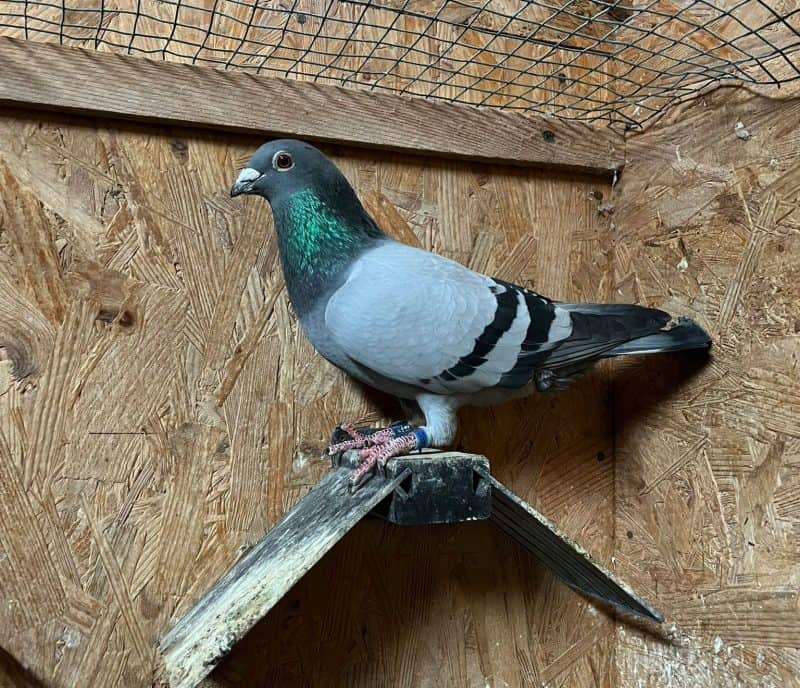
Leave a Reply